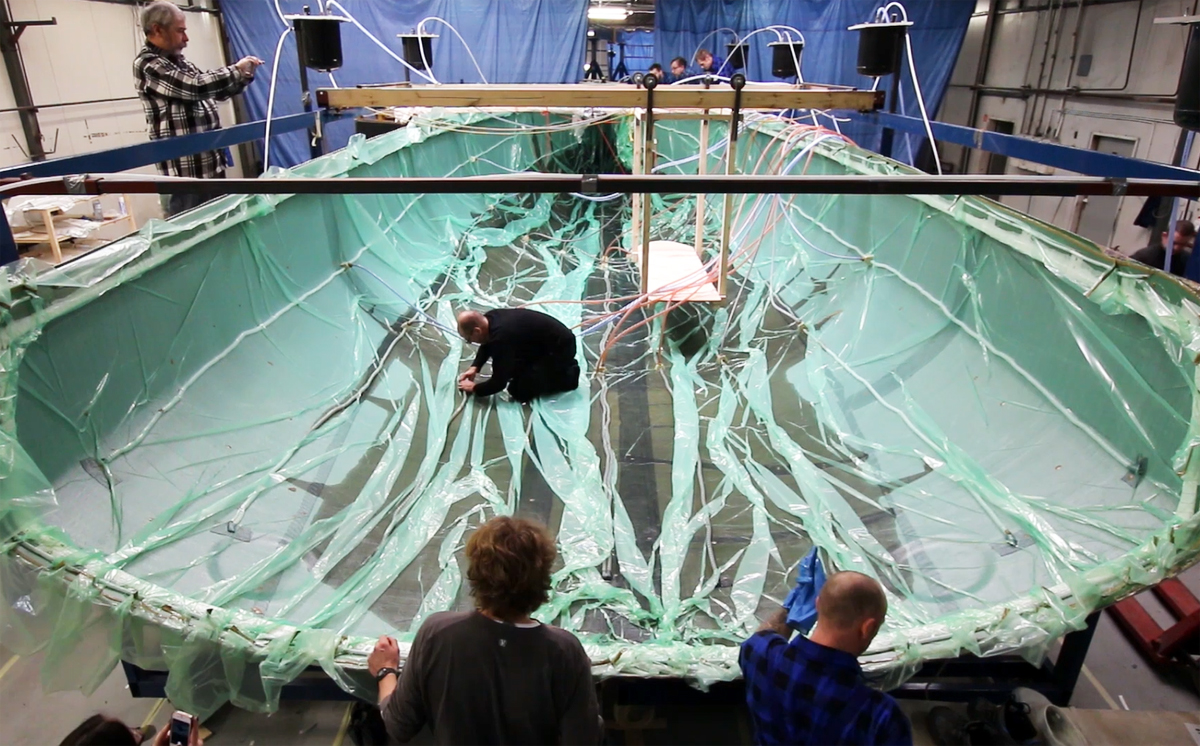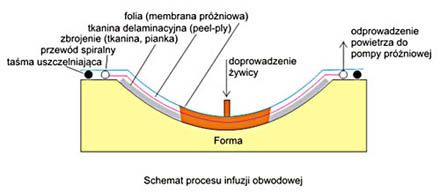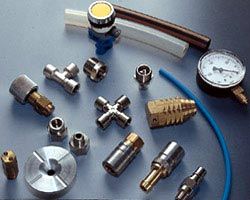INFUSION TECHNOLOGY

The infusion process combines the elements of other confined methods such as RTM and the vacuum bag method. After application of gel-coat, dry lay reinforcement at the mould surface, similarly as in case of the RTM. Then lay peel ply and the net facilitating resin flow and even infiltration of the reinforcement. The mould structure is similar as in case of the method of vacuum bag with a flange with the width of ca. 10 cm which tape sealing the mould covering foil should be adhered to. Resin inlet with a duct and air outlet to the vacuum pump is installed in the foil.
Typical application of infusion comprises the production of yachts, train, truck and plane elements.
Infusion process diagram

Reinforcement
Any reinforcement available: glass, aramid, carbon or hybrid is possible to be applied in the method. The use of cut fibre mats is not recommended as they may conglomerate and obstruct the resin flow. Then it is necessary to apply nets which ensure increased resin flow above the reinforcement and its infiltration upwards, which slows down the entire process. The application of directional strengthening or standard roving fabrics is recommended. Core materials such as PVC and PU foams may be used successfully as well.
Resin
Resin must be characterized by, above all, long enough gelling time and low viscosity. Epoxy, polyester and vinyl ester resins may be used depending on subsequent intended use of the element. Low viscosity accelerates the resin infiltration and flow process. However, due to the size of the mould and infiltration precision, longer gelling time, selected individually to the shape and dimension of the mould, is required. Resin distribution with channels under the vacuum bag also influences the pace of reinforcement infiltration. In case of very complicated shapes, computer programmes simulating resin flow are used for designing the resin supply and air discharge system. Leaving unfiltered areas in an element is the major problem. This happens when resin circulates in a given area and prevents the possibility of discharging air. Then, additional air suction should be connected in the middle of that area ad the reinforcement infiltration process should be completed.
Ancillary materials
Ancillary materials used during infusion include: peel ply, perforated foil, net facilitating resin flow, external foil, sealing tape and air discharge and resin supply system.
Peel plies are used in order to obtain a product with smooth inside surface After the resin gets hardened, it should be torn off and a mat, fine fabric structure remains at the performed element. Peel plies occur with thickness of 50-107 g/m2 and any width from 5 mm to 3 m. They are also used in case of a manual method, when composite materials are to be pasted. They eliminate the need for grinding and de-greasing of pasted surfaces. Perforated foil separates the peel ply from the resin transporting net. After the resin gets hardened it allows for easy separation of the stiff net and easier tearing off the peel ply from more complex mould shapes. Foils have P1 and P3 perforation. Depending on the reinforcement applied, P1 perforation, with bigger openings, is used when the main resin transport goes above the reinforcement.

The next layer is a polyethylene fabric net, with the braid which facilitates resin transport and simultaneously assures appropriate reinforcement pressing. Ducts supplying resin to the mould and discharging air are laid in the layer. A typical distribution layout, with uncomplicated mould, is shown at the figure below. Ducts are positioned on the opposite sides of the mould. Resin first flows with the spiral duct and then goes towards the air discharge duct. A resin overflow cup should be placed at the duct to prevent resin from getting into the pump.
Everything should be covered with a foil and sealed with two-sided silicone tape at the flange. It is very important to seal the entire mould precisely so that no air gets under the foil while sucking the resin. You may facilitate and accelerate searching for leakages with an ultrasound detector, by means of approaching it to the place of adhering the foil to the mould, while pumping out the air. Once everything has been connected and the air has been discharged, open the valve at the resin duct and watch it get distributed in the mould.
Advantages:
- spacer structures may be performed once,
- additional styrene emission reduction as compared to the vacuum bag method,
- possibility of moulding large elements,
- possibility of tracing reinforcement infiltration,
- lower mould cost as compared to the RTM method.
- relatively complicated application process,
- unfiltered areas in the element may lead to shortages,
- long time of material preparation for carrying out infusion, low efficiency.
Our staff are eager to provide you with information and to assist you select materials for specific infusion applications.
